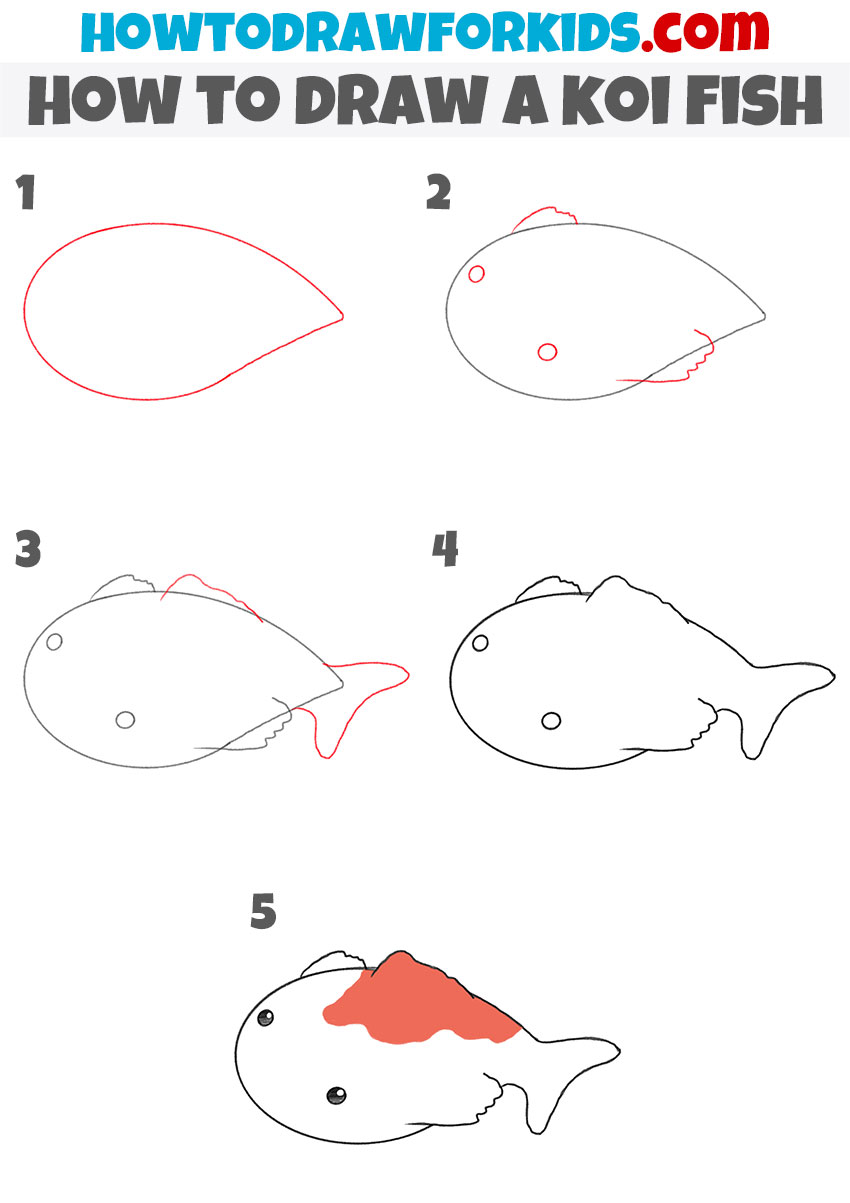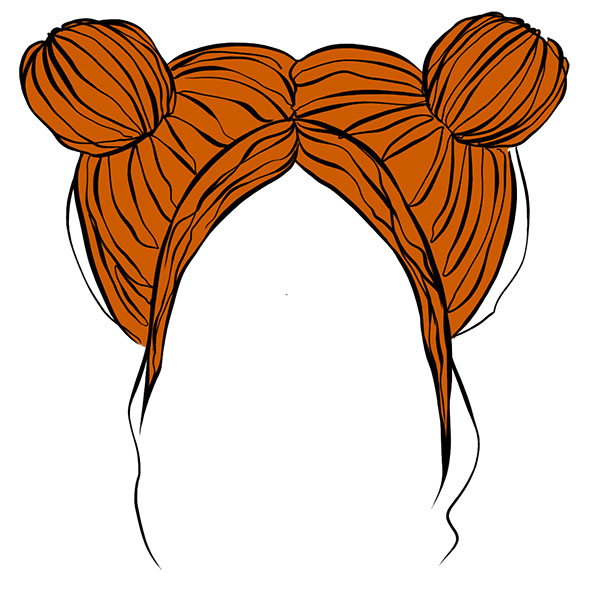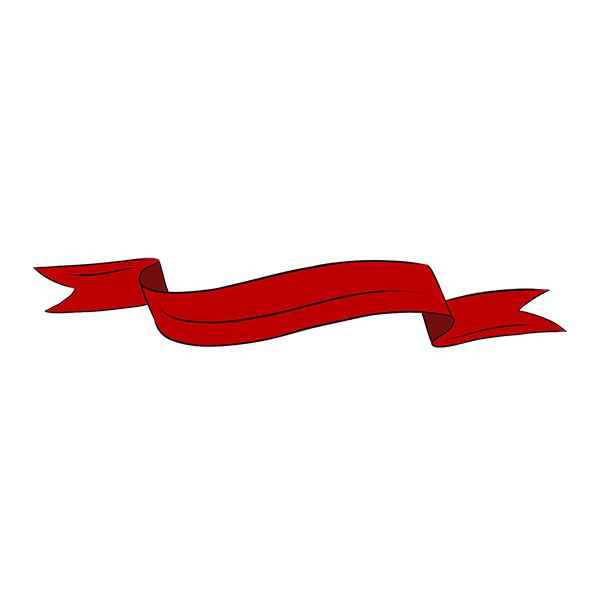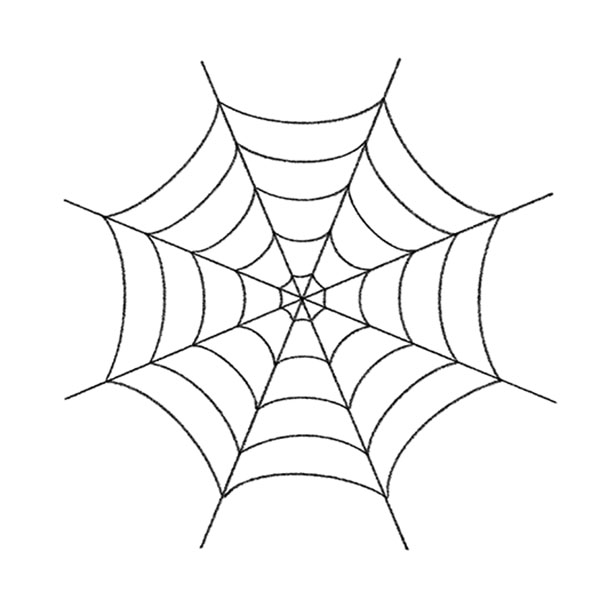How to Draw a Koi Fish
I am glad to bring to your attention a new, interesting lesson in which I will show you how to draw a koi fish step-by-step.

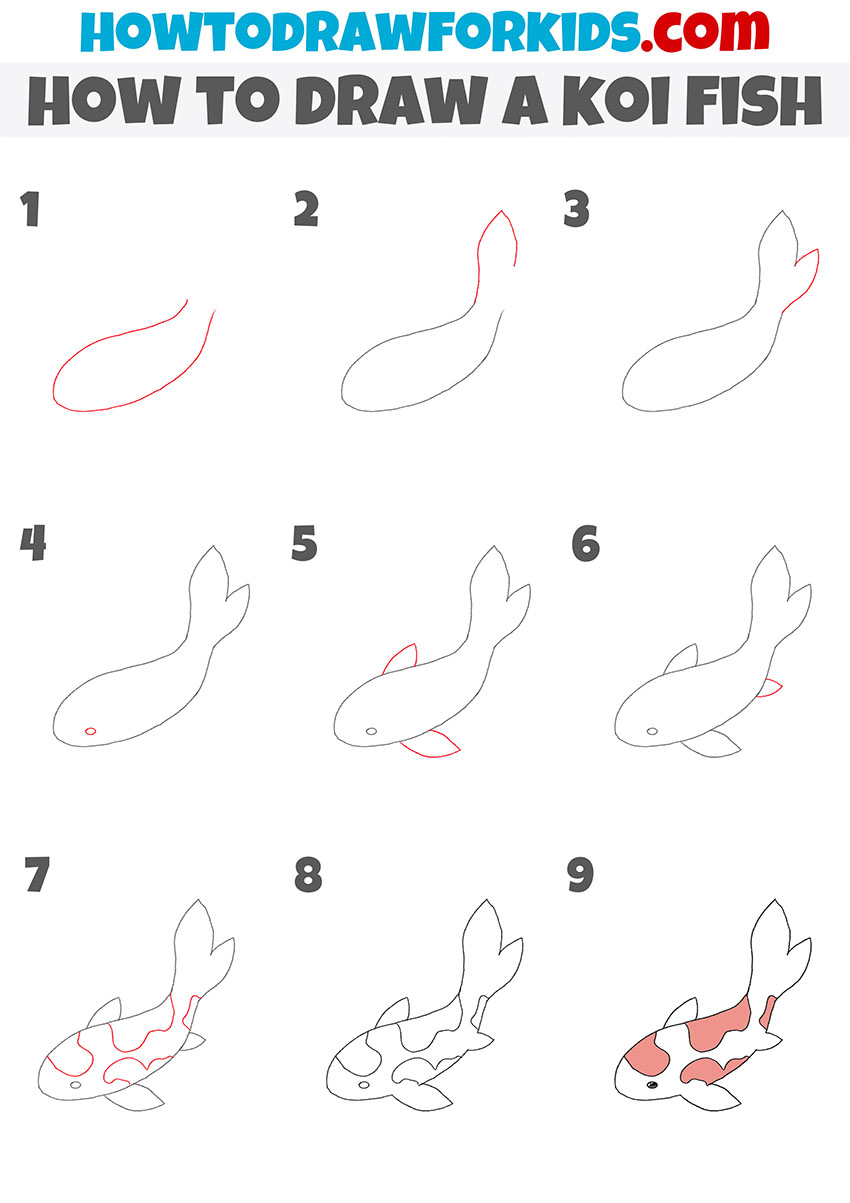
The underwater world is very diverse, and it is always interesting to draw aquatic inhabitants. Now you have to complete the lesson in which you will learn how to draw a Koi fish. These fish are most common in Japan, where they are kept mainly for decorative purposes and are an ornament to garden ponds.
It is believed that these pond fish bring happiness to the house and are a symbol of friendship and love. The body of the fish is covered with spots of various shapes and sizes. The spots can be of different colors—yellow, orange, white, black, red, and blue. Koi fish has a large elongated body, large head, powerful tail fin.
In this tutorial, you will draw a Koi fish that has red spots on its body. If you wish, you can paint the fish in any other color. In this tutorial, arbitrary lines are allowed, so the shape of the spots may differ from the example.
Materials
- Pencil
- Paper
- Eraser
- Coloring supplies
Time needed: 30 minutes
How to Draw a Koi Fish
- Add the outline of the torso.
Draw the torso with a smooth line, in which the front part is wider and tapers closer to the tail.
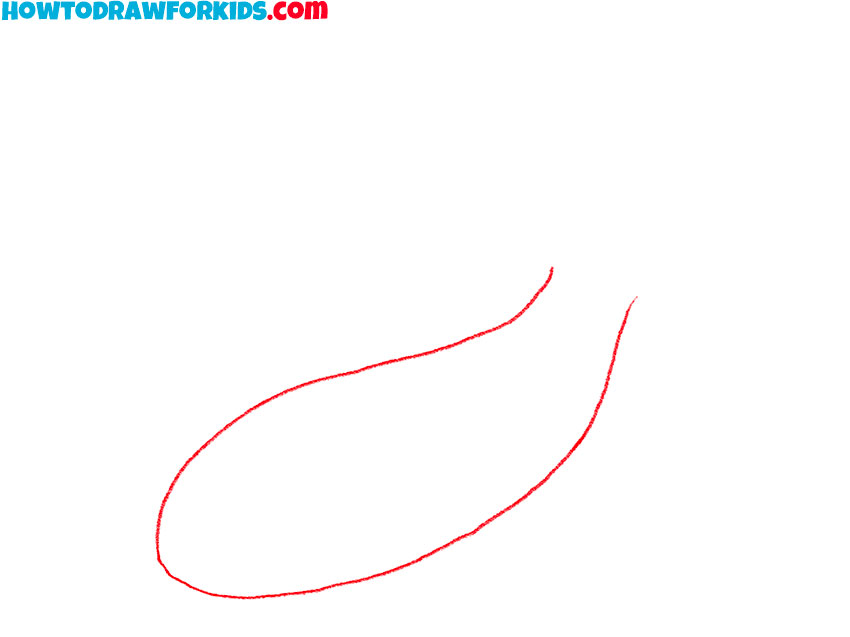
- Draw one part of the tail.
Depict a smooth line from the back and add the pointed element of the tail.
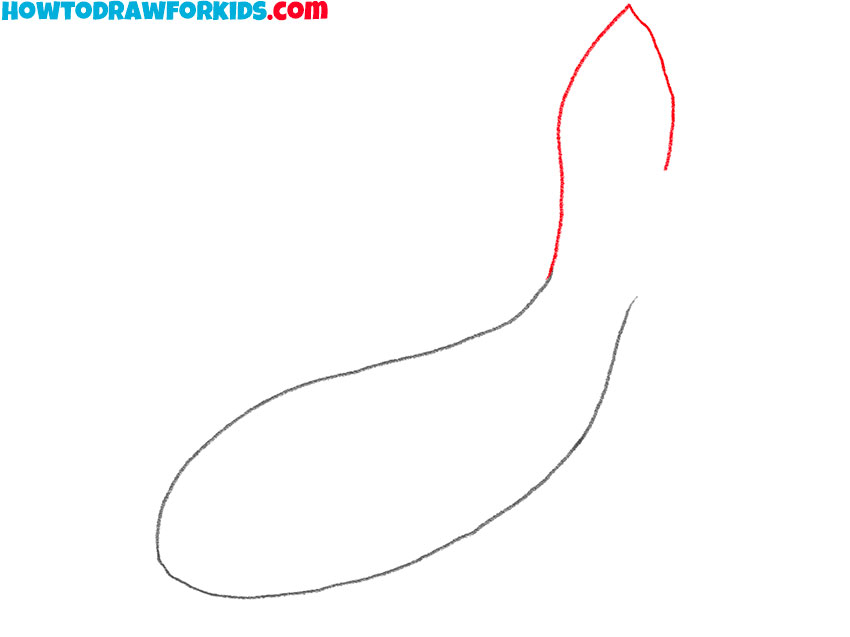
- Depict the second element of the tail.
This step is similar to the previous one, but the second element is smaller.
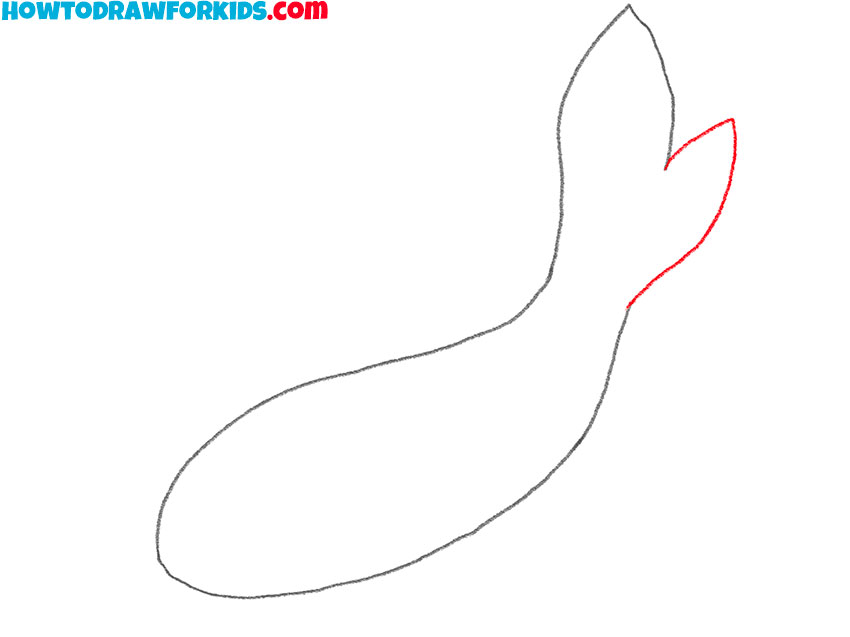
- Sketch out the eye.
Draw an oval eye at the bottom of the head.
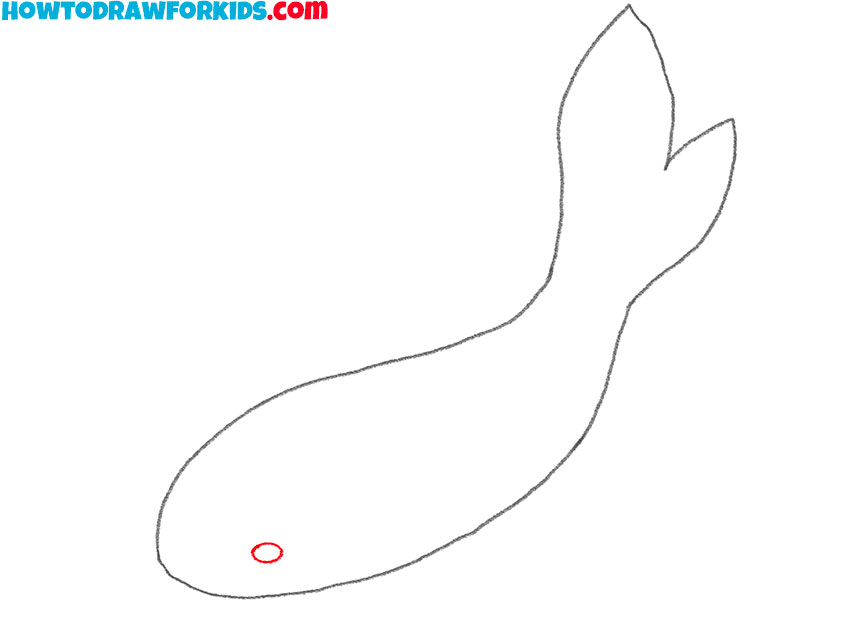
- Add the fins.
Depict two pointed fins on the back and belly.
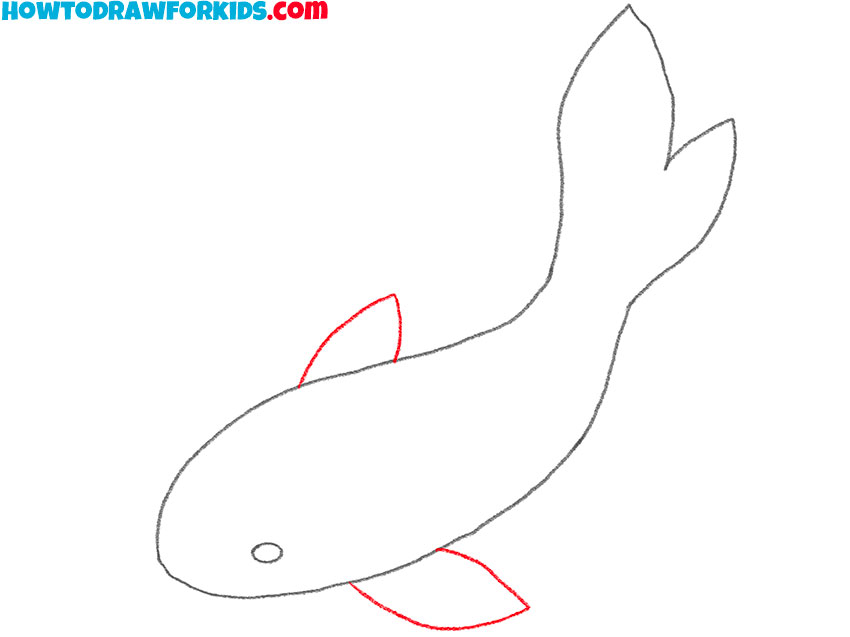
- Draw another fin.
On the belly, add the small fin of the same shape as the previous fins.
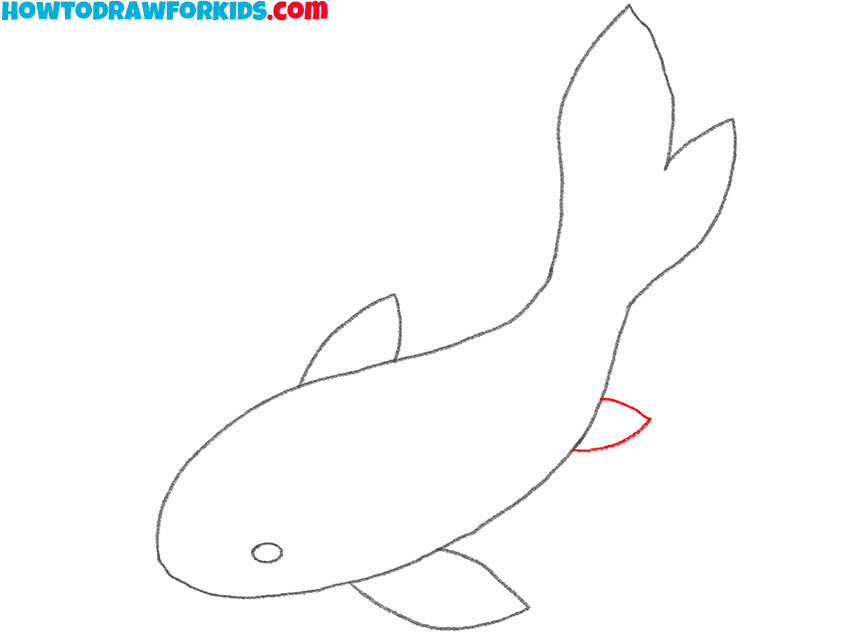
- Detail the color.
Draw several spots of different shapes on the body of the fish.
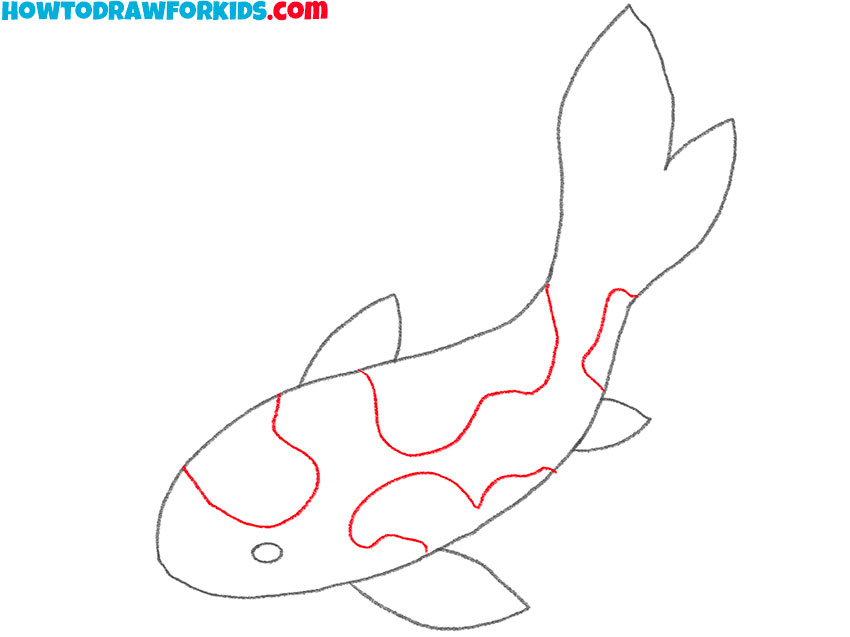
- Correct inaccuracies.
Compare the drawing with my example and correct inaccuracies if necessary.

- Color the drawing.
For coloring, use red or any other color of your choice.

Use the link at the end of the lesson and save the PDF file, which contains a brief instruction and additional training materials. Thus, you can always return to the lesson even if there is no Internet access.
Koi Fish Drawing Tutorial for Kindergarten
So now let me show you a super easy way to draw a koi fish. First draw the outline of the body in the form of a drop. Then draw the eyes and side fins. After that draw the dorsal fin and tail. Complete the process of drawing the koi fish by erasing all unnecessary lines and coloring the fish in white and red colors.
